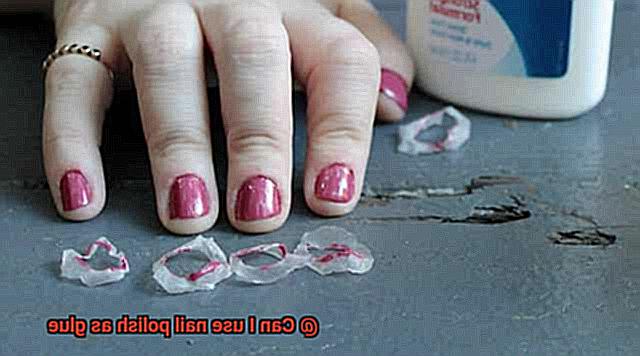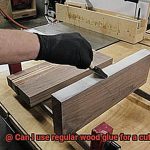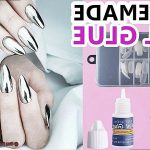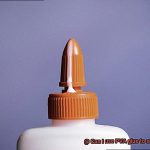Picture this: you’re in a jam, desperately needing glue, but all you can find is a bottle of nail polish. We’ve all been there, my friend. It’s that moment when you wonder if your trusty nail polish can save the day and stick things together like magic. Well, today we’re here to uncover the truth behind this age-old question.
In this blog post, we’ll dive deep into the mysterious world of nail polish and explore its potential as an adhesive. Brace yourself for a wild ride filled with scientific insights and practical tips that will equip you with the knowledge to tackle any sticky situation head-on.
So, sit back, relax, and prepare to unleash your inner MacGyver as we unravel the truth about using nail polish as glue.
What is Nail Polish?
Contents
- 1 What is Nail Polish?
- 2 Can Nail Polish be Used as Glue?
- 3 Advantages of Using Nail Polish as Glue
- 4 Disadvantages of Using Nail Polish as Glue
- 5 Alternatives to Using Nail Polish as Glue
- 6 Tips for Applying and Removing Nail Polish as a Glue
- 7 Safety Precautions When Using Nail Polish As Glue
- 8 Conclusion
Nail polish is not just a mere cosmetic product; it is a gateway to self-expression and creativity. Have you ever pondered the magic behind that perfect bottle of nail polish? Let us embark on a journey through the captivating universe of nail polish, as we uncover its intricate components and unravel its sensational effects.
The Building Blocks of Nail Polish:
- Film Formers: Picture them as the superheroes of nail polish, providing strength, durability, and flexibility to your manicure. Nitrocellulose and acrylates copolymer come together to create a solid and velvety layer on your nails.
- Solvents: These are the secret elixirs that keep your nail polish liquid until it transforms into a dazzling masterpiece. Ethyl acetate, butyl acetate, and isopropyl alcohol are common solvents that evaporate swiftly, leaving behind an exquisite finish.
- Pigments: The vibrant hues of nail polish emanate from the finest particles known as pigments. These captivating colors can be derived from minerals, dyes, or synthetic compounds, presenting a kaleidoscope of possibilities for your fingertips.
- Plasticizers: Fragile nails? Fear not. Plasticizers like camphor or trimethyl pentanyl diisobutyrate swoop in to save the day, ensuring your manicure remains flexible and chip-free.
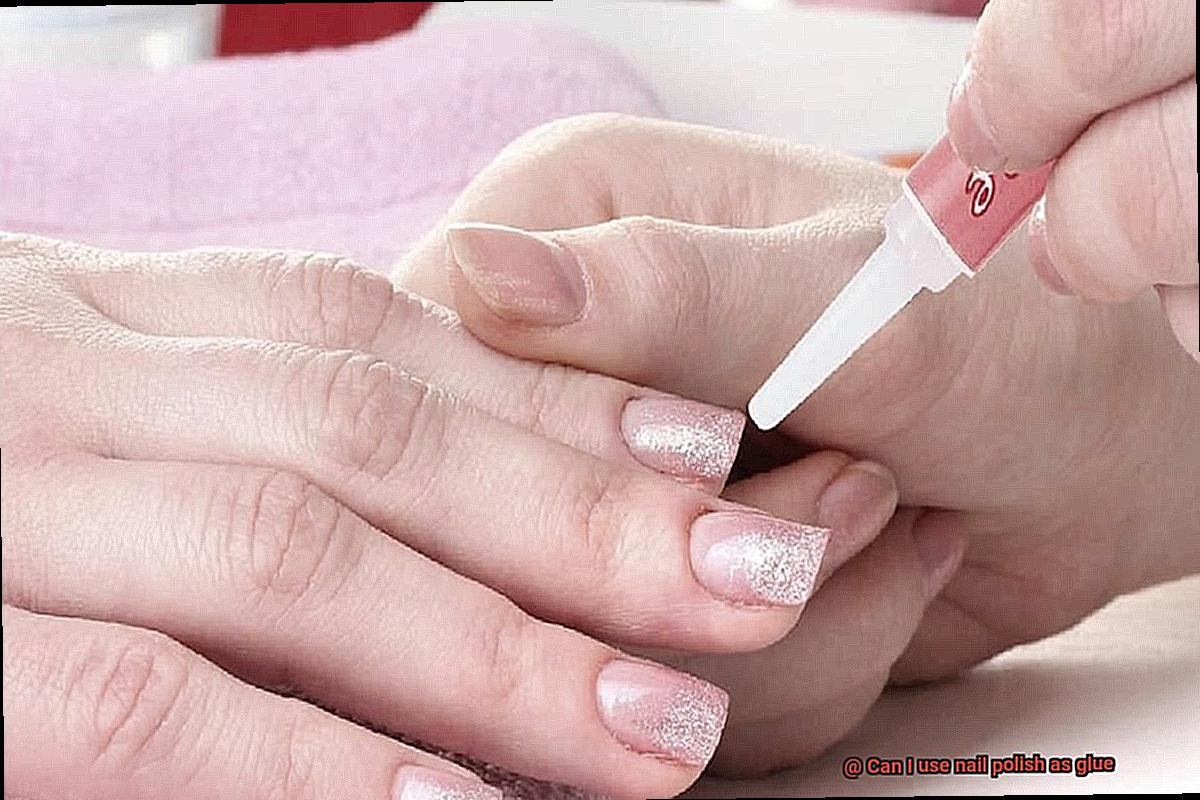
Additional Ingredients for a Flawless Finish:
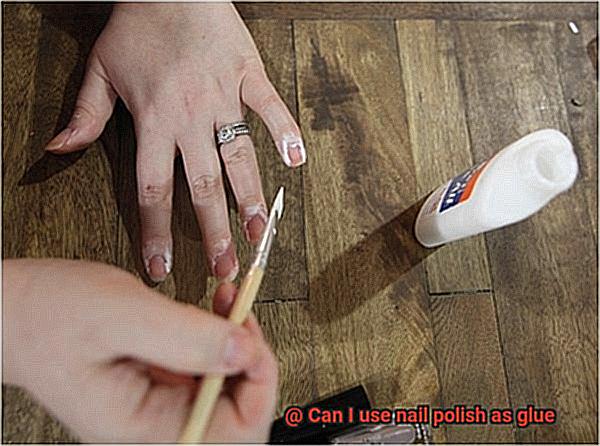
- UV Absorbers: Shield your manicure from the sun’s relentless rays with these protectors, preventing color fading caused by sunlight exposure.
- Glitter or Shimmer Particles: Embellish your nails with an enchanting touch of sparkle and pizzazz using these whimsical additives.
- Additives: Elevate your nail polish experience with ingredients that enhance application or drying time, guaranteeing a seamless and flawless finish.
Using Nail Polish as an Adhesive:
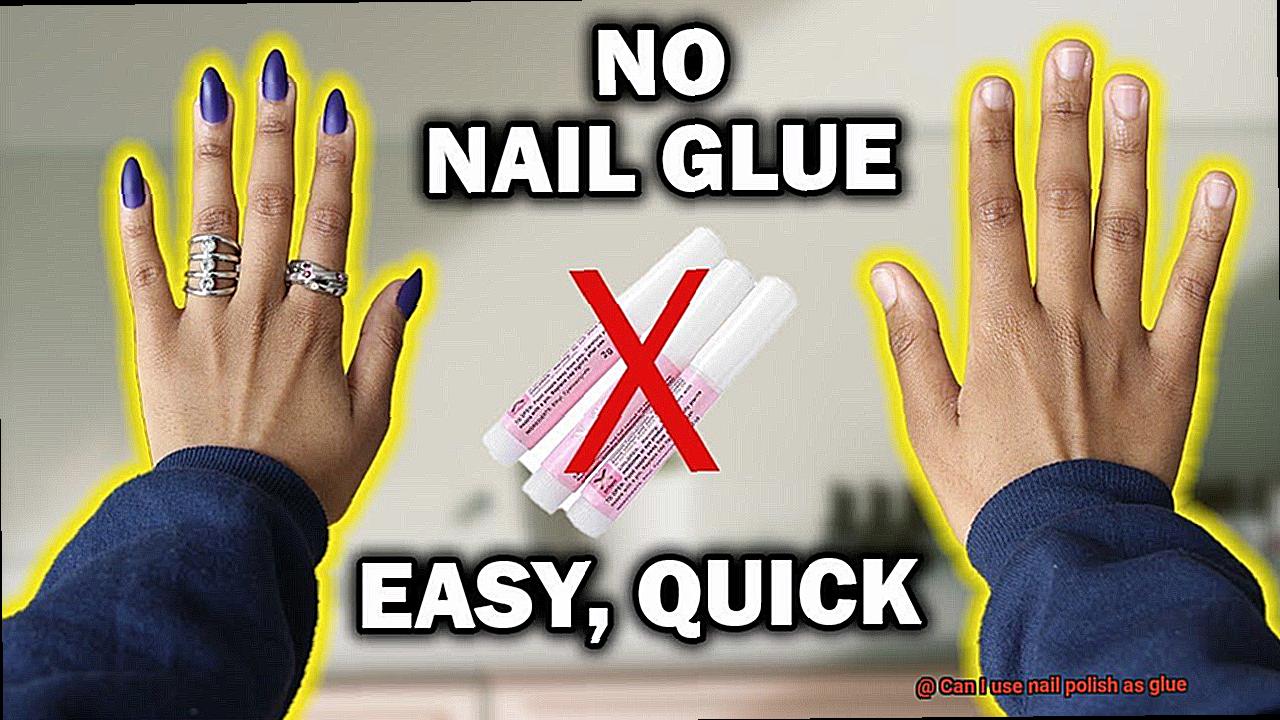
While nail polish may possess adhesive properties, it cannot replace traditional glues. It can, however, provide a temporary fix for lightweight items. Keep in mind that nail polish may not adhere well to certain surfaces like metal or plastic.
Can Nail Polish be Used as Glue?
After all, nail polish is known for its adhesive properties, so it’s only natural to wonder if it can be used as a substitute for glue. But before you start raiding your nail polish collection, let’s dive into the science behind it.
Nail polish is primarily designed for one purpose – to add color and shine to your nails. It’s formulated with ingredients that allow it to adhere to the nail surface, creating a smooth and durable finish. However, while nail polish may dry to a hard and glossy finish, it does not have the same bonding strength as glues specifically designed for adhering materials together.
Here’s why nail polish falls short as a glue substitute:
- Adhesive properties: Nail polish may temporarily stick materials together due to its wet consistency. However, once it dries, its adhesive properties are relatively weak. This means that your DIY project or quick fix may not provide a long-lasting or reliable bond.
- Composition: Nail polish contains solvents, resins, plasticizers, pigments, and other ingredients that create a smooth and durable finish on the nails. While these ingredients help the polish adhere to your nails, they are not formulated to create a strong bond between materials.
- Material suitability: Nail polish may not be suitable for use on certain materials or surfaces, such as fabrics or porous materials. These materials require a proper adhesive that can penetrate and bond effectively.
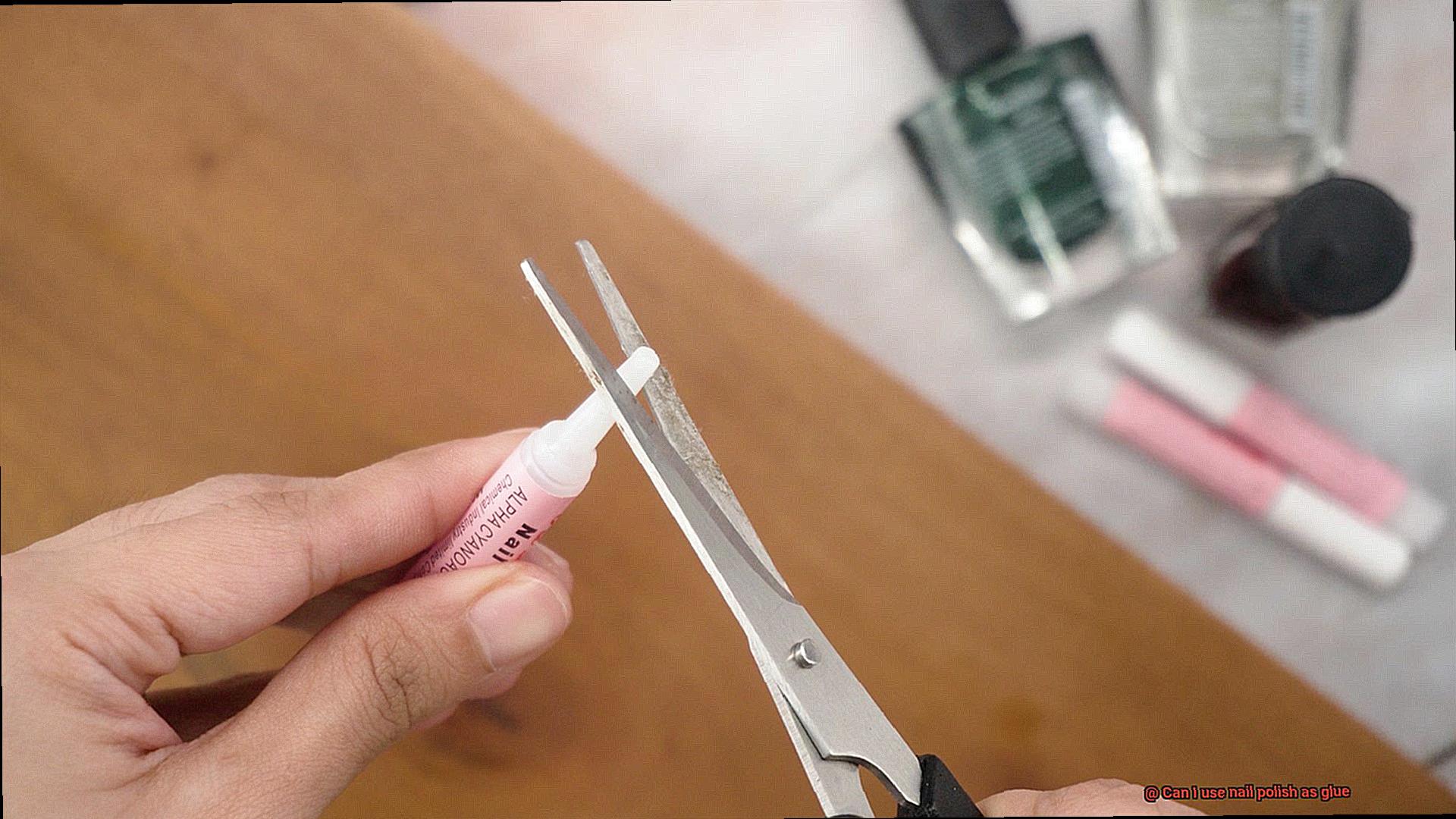
While nail polish may work in a pinch for lightweight items or temporary fixes, it’s important to remember that it is not designed to function as a glue. For heavy or load-bearing items, or projects that require a strong and long-lasting bond, it’s always recommended to use the appropriate adhesive for each specific task.
Advantages of Using Nail Polish as Glue
When it comes to DIY projects or quick fixes, most of us instinctively reach for a bottle of glue. However, have you ever considered using nail polish instead? Yes, you read that correctly – nail polish can actually be used as a makeshift adhesive in certain situations. In this article, we will explore the numerous advantages of using nail polish as glue, including its versatility, cost-effectiveness, quick-drying nature, easy application, availability, water resistance, and non-toxic options. So, let’s dive into the unexpected world of nail polish as glue.
Versatility:
Nail polish is available in an extensive range of colors and finishes, making it a remarkably versatile choice for various projects. Whether you need to glue together delicate pieces of paper, fabric, plastic, or even wood, you can easily find a nail polish shade that matches your project perfectly. With nail polish as glue, there’s no need to compromise on aesthetics.
Cost-effectiveness:
If you’re working on a tight budget or have a one-time project that does not require a large amount of adhesive, nail polish can be an incredibly cost-effective solution. Rather than purchasing specialized glues or adhesives, you can make use of the nail polish you already have on hand. It’s a win-win situation that saves both money and resources.
Quick-drying:
Time is precious, especially when working on time-sensitive projects or repairs. Unlike traditional glues that can take hours to dry and set, nail polish dries within minutes. This rapid drying time saves you valuable minutes or even hours and allows you to move forward with your project swiftly.
Easy application:
Applying nail polish as glue could not be easier. With the brush applicator that comes with most nail polish bottles, you have precise control over where the adhesive is applied. This makes it exceptionally convenient for smaller craft projects or repairs where precision is key. No more messy glue spills or imprecise application.
Availability:
Nail polish is widely available in stores that sell beauty and cosmetic products. Whether you visit your local drugstore, supermarket, or browse online retailers, you’ll find a vast selection of nail polishes. This accessibility makes nail polish a convenient option for those who may not have access to specialized glues or are in need of a quick adhesive solution.
Resistance to water:
Many nail polishes are designed to be water-resistant once dried. This property proves beneficial when using nail polish as glue for projects that may come into contact with moisture or water. It adds an extra layer of protection to the glued surfaces, making them less prone to damage caused by water exposure. No need to worry about your project falling apart due to accidental spills or rainy weather.
Non-toxic options:
For projects involving children or individuals with sensitivities, non-toxic nail polishes provide a safer alternative. These polishes are formulated without harmful chemicals like formaldehyde, toluene, and DBP. With non-toxic nail polish as glue, you can work on your projects worry-free, knowing that there are no potential health risks involved.
Disadvantages of Using Nail Polish as Glue
Nail polish, a popular cosmetic product known for its vibrant colors and glossy finish, has found its way into the world of DIY projects and quick fixes. However, using nail polish as glue comes with several disadvantages that can compromise the quality and longevity of your projects.
Weak Adhesive Strength:
Nail polish is not designed to provide strong bonding capabilities. Its weak adhesive strength makes it ill-suited for heavy loads or long-term adhesion. While it may work temporarily for lightweight items or short-term fixes, relying on nail polish as a long-lasting adhesive is simply not reliable.
Lack of Versatility:
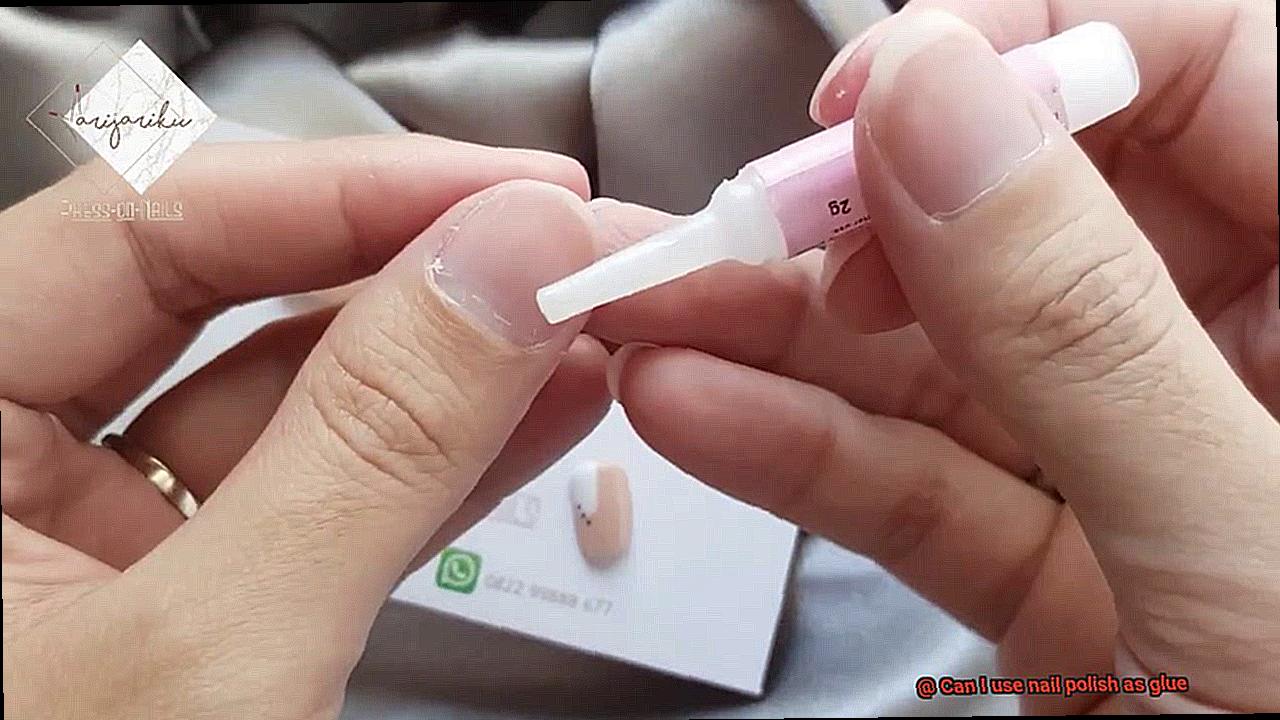
Nail polish is primarily intended for non-porous materials like glass, metal, or plastic. It may struggle to adhere to porous surfaces such as wood or fabric. Furthermore, when attempting to bond dissimilar materials together, such as metal to plastic, nail polish often falls short. Its limited versatility restricts its usefulness in a wide range of crafting and repair projects.
Limited Shelf Life:
Compared to traditional adhesives, nail polish has a relatively short shelf life. Over time, it can dry out or become thick and clumpy, rendering it ineffective as a glue. This deterioration weakens the bond or may even lead to complete failure. If you seek reliable and durable adhesion, nail polish is not the best choice.
Health Risks:
Certain nail polishes contain harmful chemicals like formaldehyde, toluene, and DBP. These substances can emit toxic fumes during application and may cause skin irritation or allergic reactions in some individuals. It’s essential to prioritize your health and consider these risks before using nail polish as an adhesive.
Difficult Removal:
Removing nail polish can be a challenging task that may damage the surfaces it was applied to. Nail polish removers often contain strong solvents that can dissolve or discolor certain materials. Delicate surfaces like fabrics or painted objects are particularly vulnerable to permanent damage. The difficulties in removing nail polish make it an impractical choice for bonding projects.
Alternatives to Using Nail Polish as Glue
I’m here to shed light on the alternatives to using nail polish as glue that will save you time, effort, and frustration.

Craft glue is the first alternative on our list. Specially formulated for bonding various materials together, craft glues like white glue or clear-drying glue are your go-to for paper, fabric, wood, and plastic. Say goodbye to weak bonds and hello to sturdy adhesion.
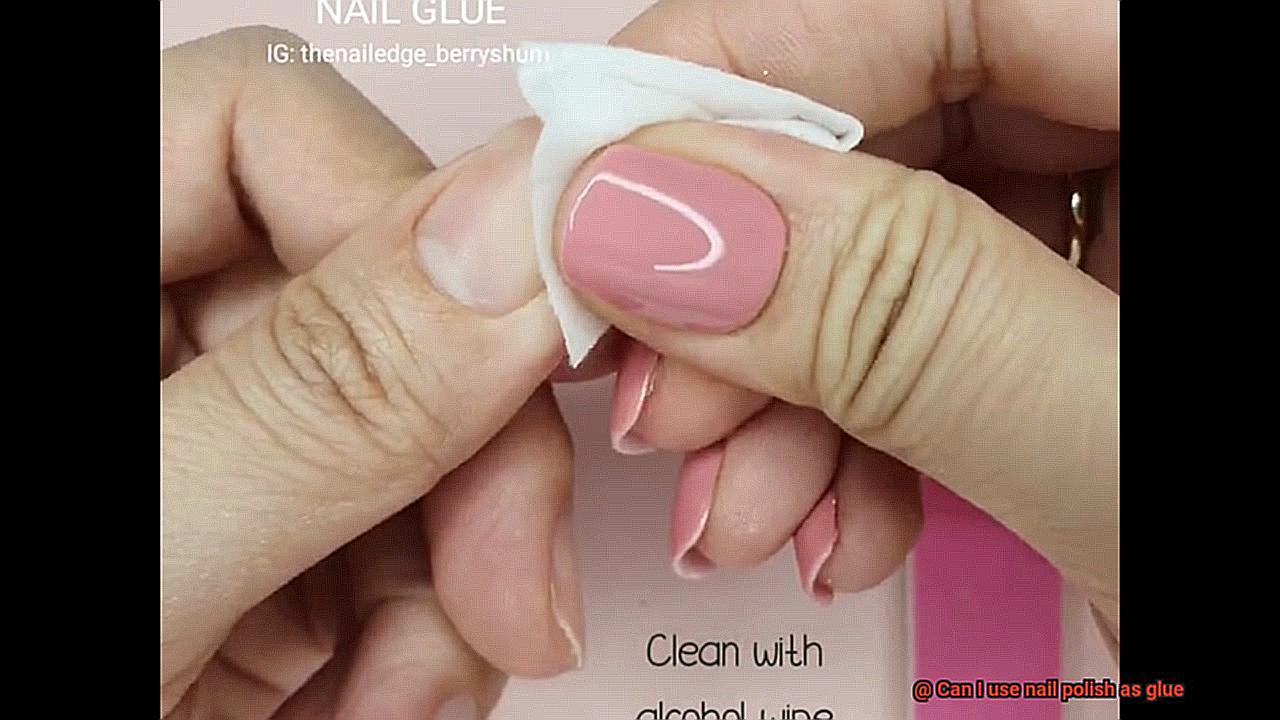
Next up is super glue, the superhero of adhesives. This fast-drying and ultra-strong adhesive works wonders on metal, plastic, rubber, and ceramics. Need an instant and durable bond? Super glue is your answer.
For heavy-duty projects, epoxy resin is your best friend. This two-part adhesive consists of a resin and a hardener that combine to create a bond capable of withstanding high temperatures and various stresses. Metal, glass, ceramics, and certain plastics will thank you for choosing epoxy resin.
Last but definitely not least, we have hot glue. If you’re into crafting or DIY projects, you’re probably familiar with the trusty hot glue gun. With its quick melting sticks that solidify upon contact, hot glue is perfect for fabric, wood, plastic, and even some metals.
When choosing an alternative to nail polish as glue, consider the specific requirements of your project. Think about the materials you need to bond and the desired strength of the bond. Don’t forget to follow the instructions provided by the manufacturer of your chosen adhesive for optimal results.
Tips for Applying and Removing Nail Polish as a Glue
While it may not possess the strength or longevity of traditional glue, nail polish can be a handy solution for small projects or crafts that require a mild adhesive. In this article, we will explore some invaluable tips for both applying and removing nail polish as a glue.
Applying Nail Polish as Glue:
- Clean the Surface: Before embarking on your gluing adventure, ensure that the surfaces you wish to bond are sparkling clean and devoid of any dirt, oils, or debris. This preliminary step is pivotal for achieving optimal adhesion.
- Thin and Even Application: When applying nail polish as a glue, remember that less is more. Opt for a thin and even layer of nail polish on one of the surfaces. Excessive application can impede proper drying and result in a weakened bond.
- Firm Pressure: To forge a solid connection between the materials, exert firm pressure when pressing the surfaces together. Hold them in place for a few seconds to facilitate bonding. The strength of your grip plays an integral role in the success of your adhesive endeavors.
- Allow Drying Time: Patience is key when it comes to using nail polish as glue. Allow the nail polish to dry completely before handling or moving the glued item. The drying time may vary depending on the brand and type of nail polish used, so exercise caution and resist the urge to rush.
Removing Nail Polish Glue:
- Soak in Warm Soapy Water: Initiating the removal process by soaking the bonded area in warm soapy water for several minutes can work wonders. This technique helps to loosen the bond and makes it easier to remove the nail polish.
- Gently Peel or Scrape Off: Armed with a soft cloth or plastic scraper, delicately peel or scrape off the softened nail polish. Exercise caution to avoid causing any damage to the underlying surface while liberating it from the clutches of the glue.
- Remove Residue with Nail Polish Remover: If any remnants of the nail polish persist, apply a small amount of acetone-based nail polish remover to a cotton ball or pad. With gentle yet determined strokes, rub the residue until it succumbs and vanishes.
Safety Precautions When Using Nail Polish As Glue
When using nail polish as glue, it is important to take certain safety precautions to ensure your well-being and minimize any potential risks. While nail polish can serve as a makeshift adhesive for small projects or crafts, it is not specifically designed for this purpose. Therefore, it is essential to follow these guidelines:
- Work in a well-ventilated area: Nail polish contains chemicals like formaldehyde, toluene, and dibutyl phthalate (DBP), which can emit fumes that may be harmful if inhaled in large amounts. To protect yourself, always work in a well-ventilated space. Open windows or use a fan to improve air circulation and dissipate any fumes.
- Wear gloves: Some individuals may develop skin irritation or allergies from direct contact with the chemicals in nail polish. To prevent any adverse reactions, it is recommended to wear gloves when handling nail polish. This simple step will help protect your skin and ensure your safety.
- Avoid contact with food or beverages: Nail polish should not be used on surfaces that come into direct contact with food or beverages. The chemicals in nail polish can leach into these items and potentially contaminate them, posing a health risk if ingested. Reserve the use of nail polish as glue for non-food related projects to maintain safety.
- Keep out of reach of children and pets: Nail polish’s attractive colors and small bottles may make it tempting for children and pets to play with or accidentally ingest. To prevent any accidents, always store nail polish in a secure location that is out of their reach.
- Consider its limitations: It is important to remember that nail polish may not possess the same adhesive properties as traditional glues. Its hold may not be as strong or long-lasting, making it unsuitable for heavy-duty or structural applications. Nail polish as glue is best suited for lightweight projects that require mild adhesion.
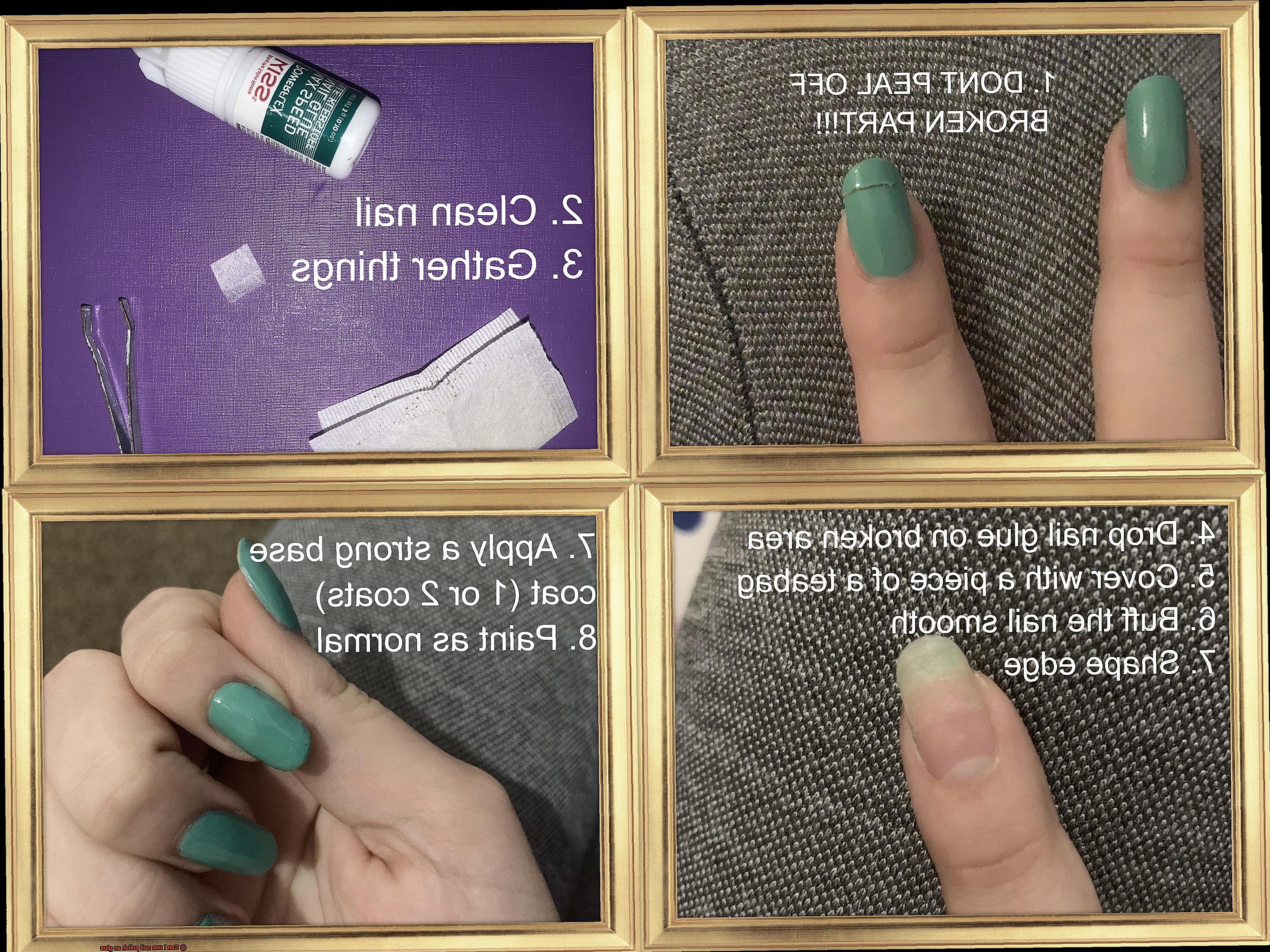
JeWyK7ijNyQ” >
Conclusion
To sum up, nail polish may have some sticking power, but it falls short as a reliable substitute for proper glue. Its main purpose is to beautify your nails, not to bond materials together. Glues specifically designed for that purpose outperform nail polish in terms of composition and adhesive strength.
That being said, there are certain advantages to using nail polish as a makeshift adhesive in specific situations. It’s versatile, cost-effective, dries quickly, easy to apply, readily available, resistant to water once dried, and offers non-toxic options. These qualities make it convenient for small craft projects or temporary fixes where a robust and long-lasting bond isn’t necessary.
But let’s not overlook the downsides of relying on nail polish as glue. Its weak adhesive strength, limited effectiveness on porous surfaces, short shelf life, potential health risks from harmful chemicals, and difficulties in removal all contribute to its limitations as an adhesive.
If you need a stronger bond or have heavy items to stick together, it’s best to turn to the appropriate adhesive for each specific task. Craft glue, super glue, epoxy resin, or hot glue are all alternatives that provide superior adhesion and longer-lasting results compared to nail polish.
In conclusion, while nail polish can serve as a temporary fix or solution for lightweight projects, it shouldn’t be your go-to choice for long-term bonding needs.

